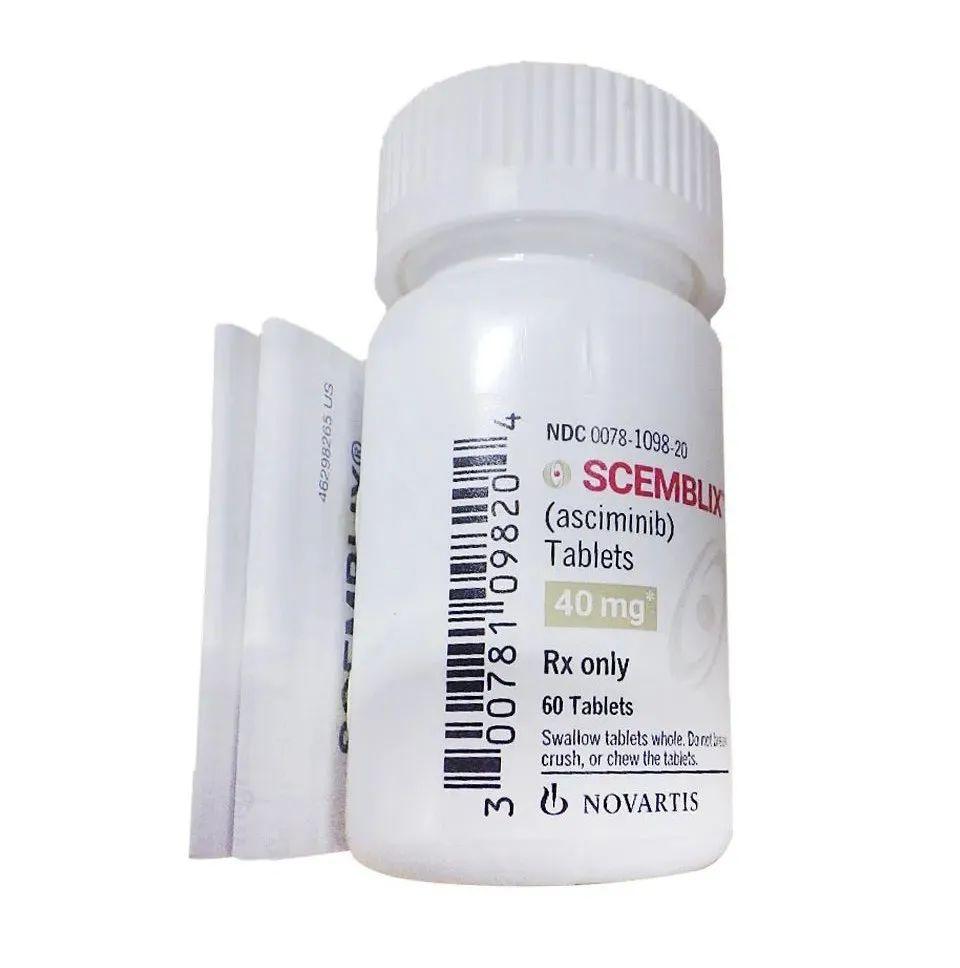Recently, Scamblix, a specific targeted BCR-ABL1 protein myristoyl pocket (STAMP) inhibitor, has been developed for the treatment of chronic myeloid leukemia (CML) ® Asciminib, located in the Lecheng pilot area of Ruijin Hainan Hospital (Boao Research Hospital), will provide treatment options for Chinese doctors and experts, and bring hope for more patients with chronic myelopathy. As the world's first and only approved STAMP inhibitor, Scamblix ® (Asciminib), after being approved by the US FDA at the end of October 2021, was approved in the Boao Lecheng Pilot Zone in just 5 months.

What is chronic myeloid leukemia (CML)?
Chronic myeloid leukemia (CML), also known as chronic myeloid leukemia in the past, is a malignant tumor formed by clonal proliferation of bone marrow hematopoietic stem cells. Once suffering from this disease, the patient's body will produce a much higher amount of "immature white blood cells" than normal individuals. In peripheral blood, persistent and progressive granulocytosis is observed, accompanied by an increase in immature granulocytes and basophils. Some patients may also have splenomegaly.
The patient has typical clinical manifestations, and positive Philadelphia chromosome (Ph chromosome) and/or BCR-ABL1 fusion gene is the basis for diagnosing CML.
Epidemiological studies show that CML accounts for about 15% of adult leukemia, and the annual incidence rate in China is 0.39-0.55/100000. Chinese CML patients are younger than those in the West, with a median onset age of 45-50 years in China and 67 years in Western countries.
New Methods for CML Treatment
In the past twenty years, the treatment of CML has undergone tremendous changes. With the advancement of medical technology, the effective treatment of tyrosine kinase inhibitors (TKIs) has enabled most CML patients to achieve high-quality long-term survival. Some patients can even achieve long-term treatment-free remission (TFR), i.e. functional cure, after terminating TKI treatment.
Nevertheless, there are still some patients who are intolerant or develop resistance to existing TKI treatments. One of the main mechanisms of TKI resistance is mutations in the ABL kinase region. The most common mutation among them is the T315I mutation. Patients with T315I mutations are resistant to both first-generation and second-generation TKI treatments, which significantly increases their risk of disease progression.
According to incomplete statistics, approximately 800000 people in China go abroad to seek medical treatment every year in order to seek the best drugs and medical equipment from abroad. Medical expenses are huge, and many patients are limited by domestic medical technology and cannot receive timely and effective treatment. Thanks to the preferential policy of "Two Countries and Nine Articles", up to now, the Boao Lecheng Pilot Zone has introduced over 200 innovative drugs and instruments that have not been listed domestically for clinical use, becoming the main channel for international innovative drugs and instruments to enter the Chinese market, gradually meeting the needs of Chinese people for new drugs and instruments.
Scemblix ® What is Asciminib?
In order to help domestic CML patients achieve their long-term survival goals, Ruijin Hainan Hospital fully utilizes the franchise policy of Lecheng Pilot Zone and introduces Scamblix from Novartis Group ® Asciminib brings new treatment options for CML patients. Scemblix ® Asciminib is a specific targeting BCR-ABL1 protein myristoyl pocket (STAMP) inhibitor that works by binding to ABL myristoyl pocket, providing new treatment options for TKI in patients with drug resistance and/or intolerance, and improving their prognosis.
As the first STAMP inhibitor approved by the US Food and Drug Administration, Scamblix ® Asciminib is used in Philadelphia chromosome positive CML chronic phase (Ph+CML-CP) adult patients who have previously received at least two TKI treatments, and is fully approved for use in T315I mutant Ph+CML-CP adult patients.
In the future, domestic patients can not only apply for the use of globally leading CML new drugs and receive treatment from professional teams at Ruijin Hainan Hospital, but also rely on Lecheng's "take medicine away from the park" policy to bring home an appropriate amount of clinically approved drugs. Experts from Ruijin Hainan Hospital will provide remote medication guidance and follow-up.
As the world's leading multinational pharmaceutical company, Novartis has a broad product portfolio and rich product lines covering breast cancer, blood diseases, lung cancer, melanoma, kidney cancer and other cancers. In 2001, Novartis launched the world's first targeted drug for the treatment of CML patients, increasing their 5-year survival rate from 30% to over 90%, turning deadly cancer into a chronic disease that can be controlled, bringing good news to countless patients, and becoming a milestone in the field of CML treatment.
Afterwards, Novartis continued to conduct in-depth research to reduce the risk of disease progression and make it safer for patients. It is also the only targeted drug currently listed for the treatment of CML that includes TFR (no treatment relief) management in the instruction manual, making it possible for patients to achieve "functional cure".
This time at Ruijin Hainan Hospital, the urgently needed clinical use of Scamblix ® Asciminib has brought good news to the vast number of CML patients in China. Novartis will also continue to rely on national pharmaceutical industry policies to accelerate the entry of innovative drugs into the Chinese market, benefit Chinese patients through more high-quality drugs, and assist in the development of the pharmaceutical industry.